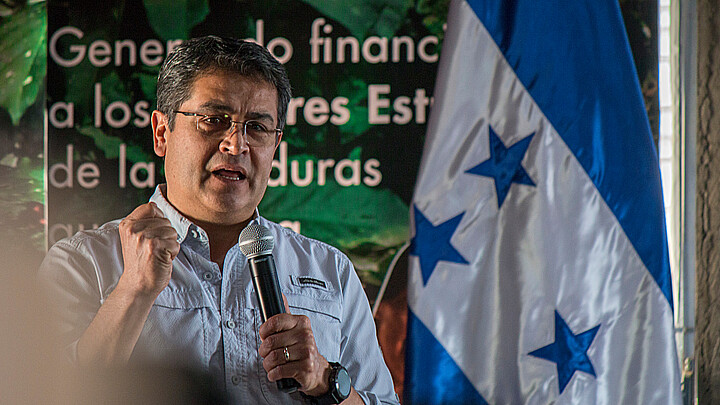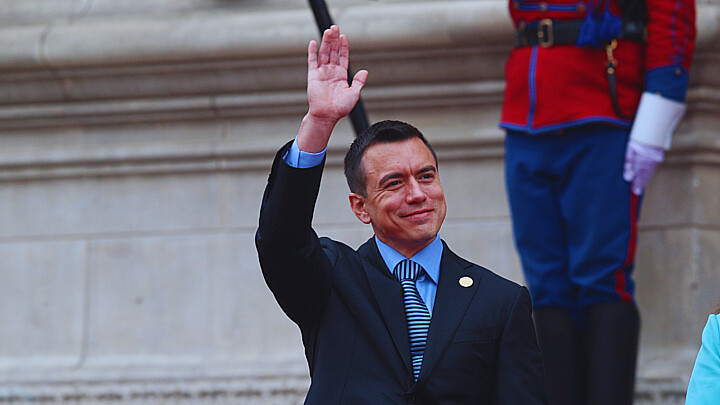Politics
Tensions rise in Ecuador after 9 days of protests by indigenous groups against the government
Ecuador has been on a national strike for nine days. Two deaths, roadblocks, clashes between protesters and police, repression, vandalism, and looting have been reported
June 22, 2022 4:00pm
Updated: June 22, 2022 5:01pm
For more than a week, Ecuador has seen protests led by indigenous groups demanding social and economic reforms from the government of Guillermo Lasso as the country's economy is hit by inflation and unemployment.
Demonstrations began in the northern region of Pichincha, which influences the capital Quito and neighboring Cotopaxi and Imbabura. Mobilizations have also occurred in most of Ecuador's 24 provinces.
Clashes between protesters and security forces have left two dead, dozens injured, and several arrested, reported BBC News.
Around 18 police officers went missing after an attack against police facilities on Tuesday in Puyo, in the Ecuadorian Amazon, according to Interior Minister Patricio Carrillo on Wednesday.
Roadblocks of burning tires and tree branches have been registered in the main accesses to the north and south of the capital, disrupting traffic flow.
In the midst of the protests, Lasso decreed a 30-day state of emergency on Friday night in the three most affected regions to "guarantee the defense of our capital and our country." The Ecuadorian president later extended the decree to include the provinces of Chimborazo, Tungurahua, and Pastaza.
Lasso claimed on Saturday that he had responded to the demands of the Confederation of Indigenous Nationalities of Ecuador (CONAIE), the largest indigenous movement in the country, which called for the protests.
"We are attending to legitimate citizen demands. Their [CONAIE's] response: more violence. New threats attack Quito," Lasso said.
The spokespersons of the main human rights defenders, such as the Alliance of Human Rights Organizations, have condemned the repression ordered by the government, which argues that its actions are meant to "protect" the Andean capital, reported France 24.
¡El Ecuador elige la democracia, nunca el caos!
— Guillermo Lasso (@LassoGuillermo) June 20, 2022
Como Presidente busco siempre el diálogo, pero no voy a permitir que afecte a quienes desean trabajar. Estoy aquí para cumplir con los compromisos que tengo con el país y defender la capital. pic.twitter.com/dMHa1od8zx
The origin of the protests
CONAIE demands that the Ecuadorian government lower fuel prices, address unemployment, regulate the prices of agricultural products, and combat crime, among other demands.
El directivo de la Conaie insistió el viernes que mantendrá las protestas, incluso después de que Lasso anunciara el estado de excepción. El presidente de la Confederación, Leonidas Iza, que fue detenido este martes durante las manifestaciones y liberado posteriormente, hizo un llamado a la protesta pacífica, según CNN.
CONAIE’s executive insisted on Friday that he would continue the protests, even after Lasso announced the state of emergency. The president of the Confederation, Leonidas Iza, who was arrested on Tuesday during the demonstrations and later released, called for peaceful protest, according to CNN.
"Democracy is at serious risk"
Defense Minister Luis Lara declared that "democracy is at serious risk," as tensions over social protests continued and after one of the demonstrators was killed, reports France 24.
Lara described the demonstrators as "exalted people who impede the freedom of movement of the majority of Ecuadorians," claiming that their "sole objective" is to "create panic, attacking and extorting companies, institutions and authorities."
On Tuesday, protests increased with the road blockades in different parts of the country. In Quito, several streets remain paralyzed and the Carondelet palace—the Government house—continues to be guarded by security forces.











